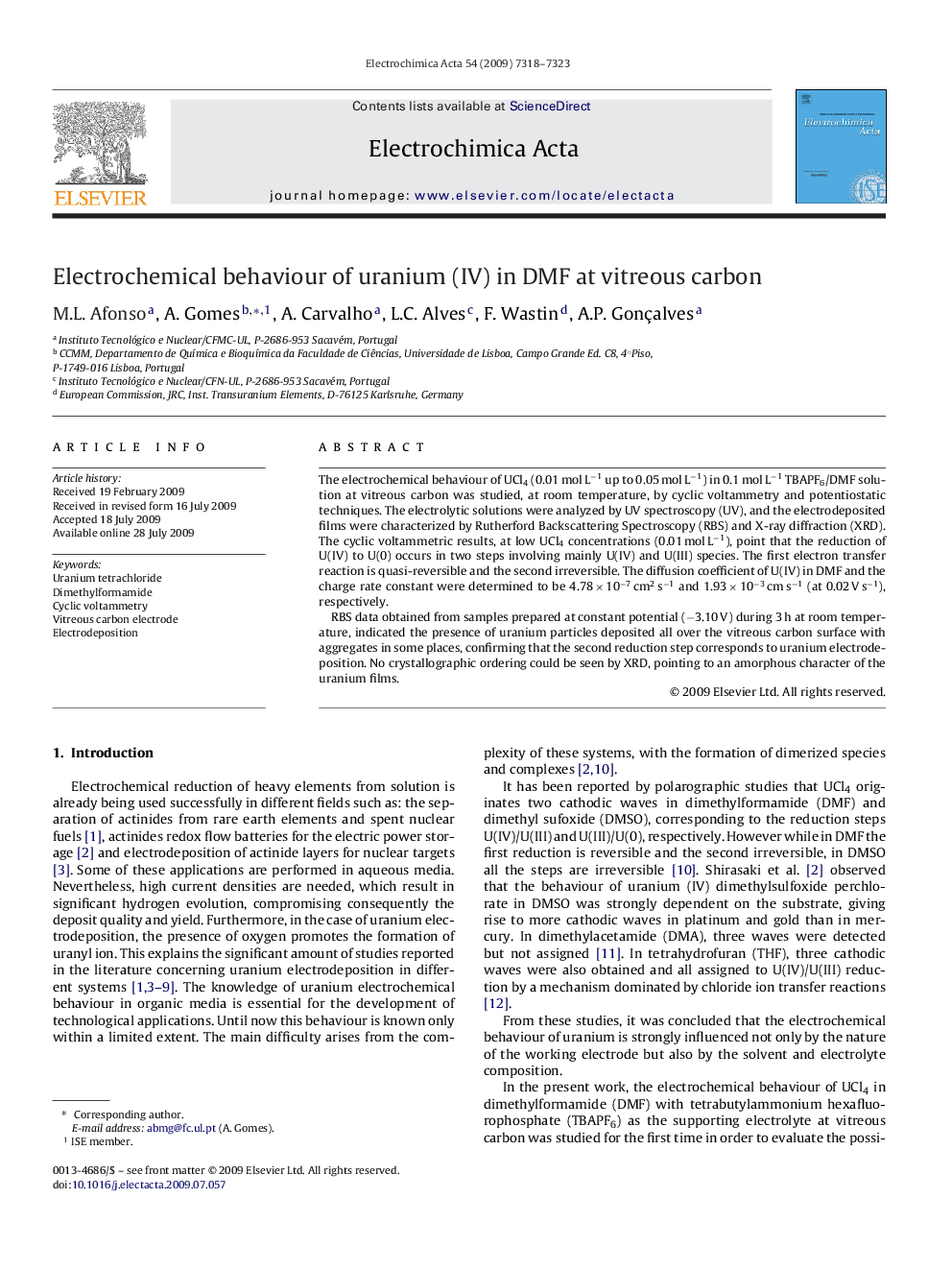| Article ID | Journal | Published Year | Pages | File Type |
|---|---|---|---|---|
| 191929 | Electrochimica Acta | 2009 | 6 Pages |
The electrochemical behaviour of UCl4 (0.01 mol L−1 up to 0.05 mol L−1) in 0.1 mol L−1 TBAPF6/DMF solution at vitreous carbon was studied, at room temperature, by cyclic voltammetry and potentiostatic techniques. The electrolytic solutions were analyzed by UV spectroscopy (UV), and the electrodeposited films were characterized by Rutherford Backscattering Spectroscopy (RBS) and X-ray diffraction (XRD). The cyclic voltammetric results, at low UCl4 concentrations (0.01 mol L−1), point that the reduction of U(IV) to U(0) occurs in two steps involving mainly U(IV) and U(III) species. The first electron transfer reaction is quasi-reversible and the second irreversible. The diffusion coefficient of U(IV) in DMF and the charge rate constant were determined to be 4.78 × 10−7 cm2 s−1 and 1.93 × 10−3 cm s−1 (at 0.02 V s−1), respectively.RBS data obtained from samples prepared at constant potential (−3.10 V) during 3 h at room temperature, indicated the presence of uranium particles deposited all over the vitreous carbon surface with aggregates in some places, confirming that the second reduction step corresponds to uranium electrodeposition. No crystallographic ordering could be seen by XRD, pointing to an amorphous character of the uranium films.
